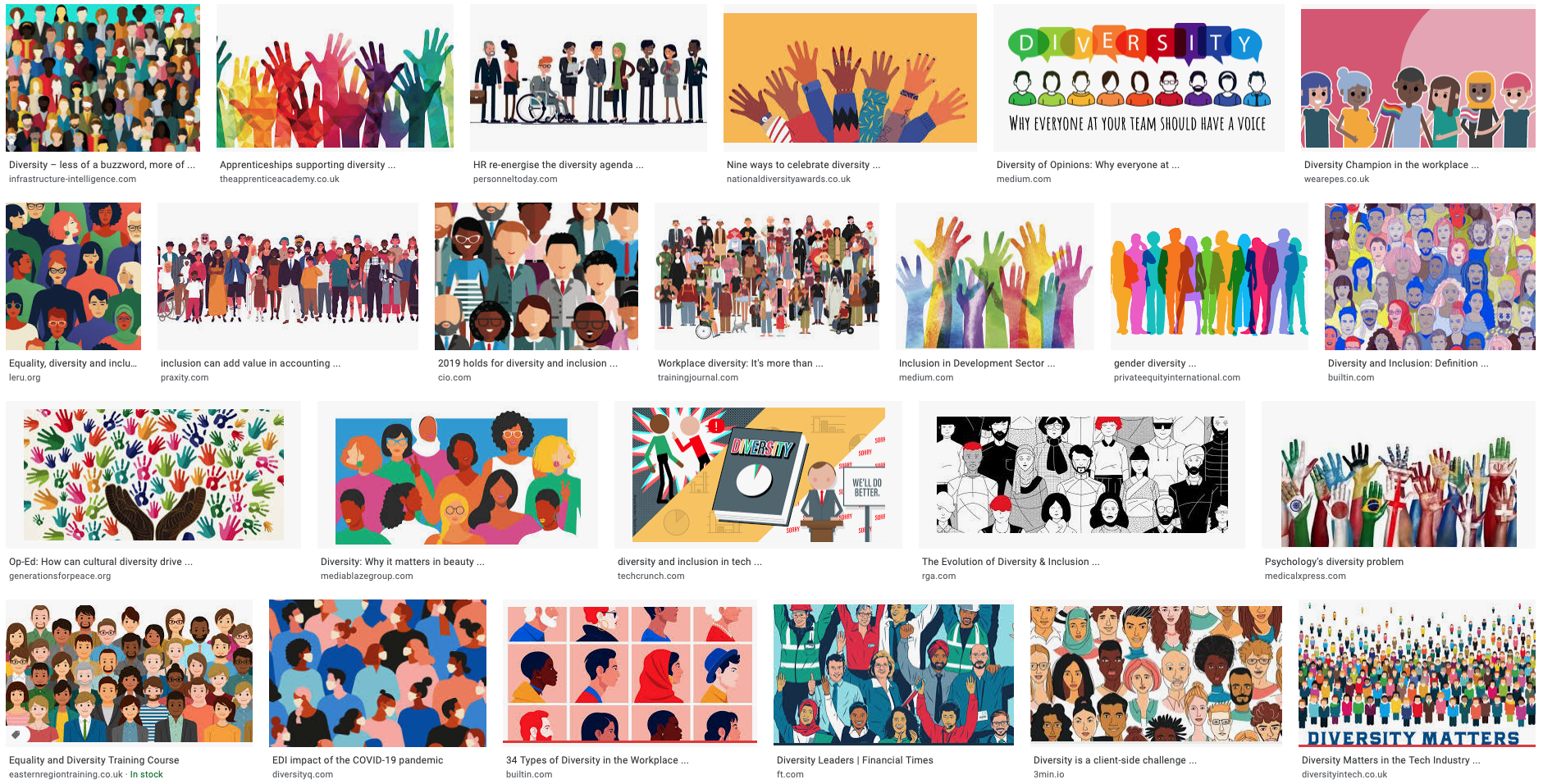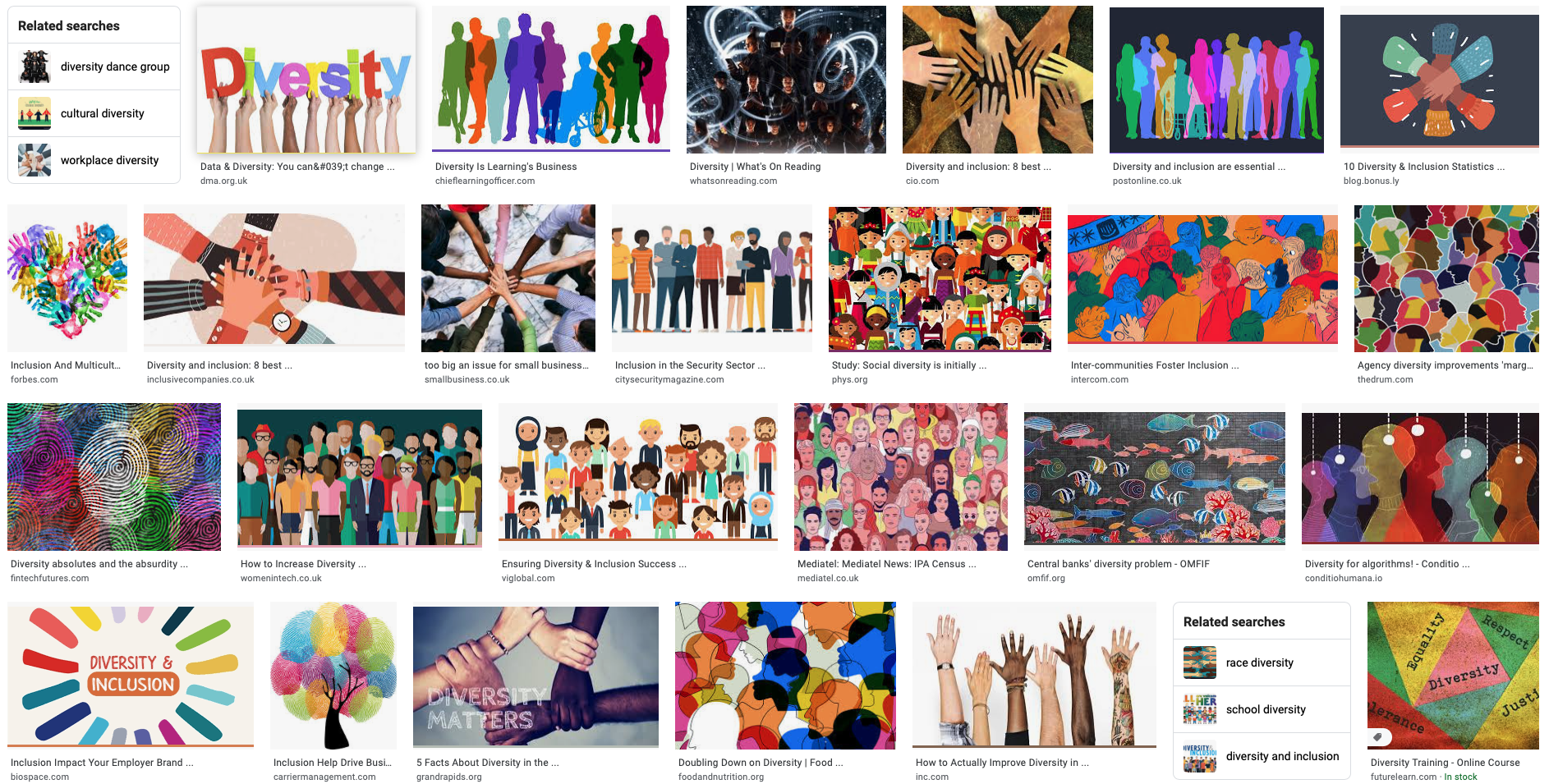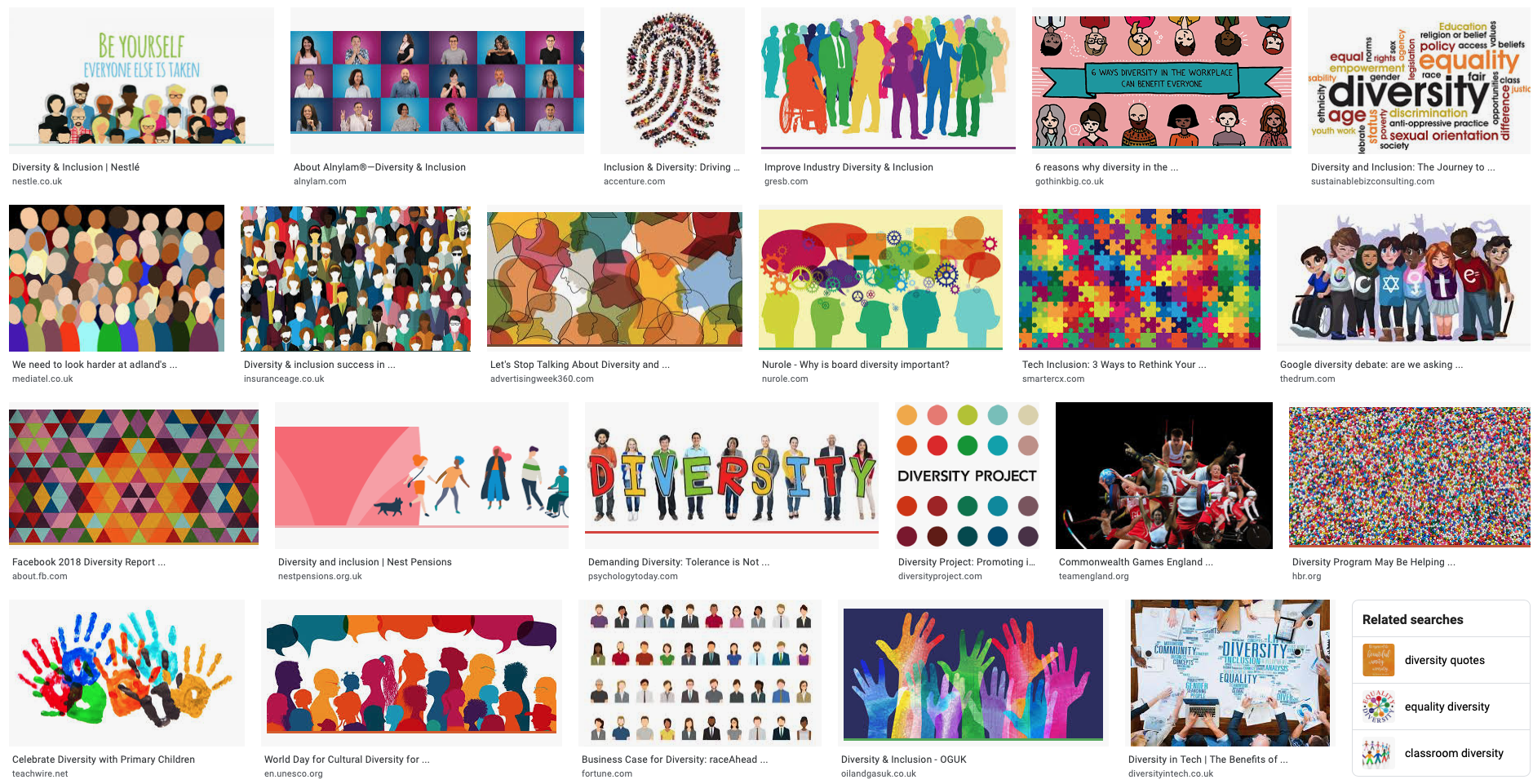Definition: 1) the fact of many different types of things or people being included in something; a range of different things or people 2) the fact that there are many different ideas or opinions about something.
Source: oxfordictionaries.com
Spot the difference
In the past years, diversity has become a buzzword also greatly used in conjunction with the word ‘inclusivity’. The main idea being that people have all sorts of differences: gender, culture, religion, sexual orientation, skin colour, health conditions, age, etc. And that those differences should be tolerated and embraced to reflect the very own diversity of human kind.
But if diversity possibly means a lot of things, how can this be shown most effectively? Very colourful illustrations of people or silhouettes is one of the main ways of expressing it with an added « crowd » effect. A sure way to encompass everyone indeed! We also notice that full length silhouette portraits almost always feature a person in a wheelchair.
The second most common ways of depicting diversity is to use illustration of hands, again in a great array of colours. And on rare occasions, photographs of ‘real’ hands with different skin tones will be used. Whatever the medium, the composition is always twofold: raising hands or crossing hands on top of each other.
The common thread is by far the illustration approach and why is that? As a general rule and appropriately for this matter: illustrations offer the benefit of not having to be too literal, too much bound by reality and can break the rules of archetypal diverse representation. However, the formulaic use of a crowd and multiple colours may well interestingly result in adverse effects: the very blurring of individual differences, a strange feeling of meaninglessness as well as a very childish way of seeing diversity. All this reminds us a lot of our previous image search on the word “citizen / citoyen”.
Captured on 3rd July 2020





